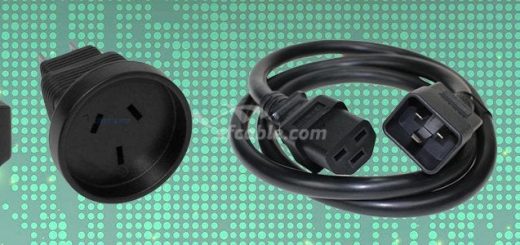Wired vs Wireless: How to Choose Your Connection Type
Introduction
Another upload failed for the YouTube creator. In another room, the gamer lost a critical connection to the match. Across the hall, the IT team debated which upgrade to bring to their network.
Each scenario points to the major kernel: Should it be a wired connection or a wireless network? Depending on the choice, speed or stability, as well as the capability of systems working under pressure, might be affected.
Some setups shall call for flexibility; others demand reliability at all costs, for which only a wired network can give. This blog will see what type of internet connection should be used, depending on real needs and not on assumptions.
Understanding Wired and Wireless Internet Connection
What is Wired Internet?
Data moves physically from device to device through a wired connection. This implies fast speed, consistency, and very low latency. Home and commercial applications mostly use Ethernet.
More with fiber optic may experience faster speeds, but require specialized installation procedures. DSL over telephone lines is still common in some areas. All of these systems practically need well-structured wiring layouts of cables, wall ports, and routers.
A wired network is mostly set up whenever a company, a data center, or a gaming enthusiast requires stability. Although setting up is cumbersome, it performs better performance-wise.
What is Wireless Internet?
A wireless connection carries signals through the air using radio frequencies, allowing devices to join the network without cables. The top three types currently are Wi-Fi, mobile data, and satellite internet.
Wi-Fi is through routers and access points, while mobile data connects through cell towers. Satellite Internet is useful for areas that are either highly remote or rural and where other sources are limited. For a good wireless network to function, it must have stable signal coverage and setup.
This freedom of movement is attractive to several users and setups. Those who are not fully conversant with these setups should first understand these systems and decide on the right internet connection to employ.
Comparative Analysis: Wired vs Wireless Internet Connection
| Criteria | Wired Internet | Wireless Internet |
|---|---|---|
| Speed | Consistent and high; less affected by congestion | Varies depending on signal strength and interference |
| Reliability | Very stable; ideal for uninterrupted usage | Can drop due to signal loss or device distance |
| Latency | Lower latency; preferred for gaming and real-time applications | Higher latency; may affect video calls and gaming |
| Security | More secure by default; physical access required | Needs strong encryption and password protection |
| Mobility | Limited to wired ports and fixed locations | High flexibility; works throughout the coverage area |
| Installation | Requires cable runs, ports, and wall access | Easier setup; fewer physical components needed |
| Scalability | More complex in large setups or multi-floor spaces | Easier to scale with extenders or mesh systems |
| Maintenance | Low once installed; minimal ongoing adjustments | Requires updates, reboots, and signal troubleshooting |
Pros and Cons of Wired and Wireless Internet Connection
Pros of Wired Internet Connection
- During peak hours, it sustains high-speed performance with consistency.
- It guarantees stable connectivity through interference that may arise from an external signal or who or that can put a barrier between it.
- The Internet could be used over a short length, which is one of the best things about low latency in applications that require real-time responses, like online gaming or VoIP.
- Security is enhanced, as interception of data requires physical access to the line.
- Best for activities requiring huge amounts of bandwidth, like streaming 4K videos or backing up to the cloud.
- On the other hand, it’s great for setting up a home office, where uninterrupted calling and file transfer are paramount.
- Wireless networks lose signal strength with an increase in distance, which is not the case with wired networks, especially when we are talking about large buildings or dense environments.
Cons of Wired Internet Connection
- Limited mobility, as devices must stay physically connected to the network via cables.
- Installation can be cumbersome, especially in large or complex environments.
- Not suitable for temporary setups where quick deployment and flexibility are needed.
- Cable management can be messy, creating clutter or tripping hazards in the workspace.
- Reconfiguring the setup requires manual effort to reroute or replace cables.
- High installation costs in expansive areas due to extensive cabling and labor.
- Incompatible with many portable devices that lack Ethernet ports without adapters.
Pros of Wireless Internet Connection
- Devices can connect to the internet without physical cables.
- Users can move freely within the coverage area while staying connected.
- One wireless network can support multiple devices at the same time.
- Setup is simple and requires fewer tools or installation work.
- Wireless access is ideal for temporary workspaces or rented locations.
- It reduces cable clutter in homes, offices, or server rooms.
- Expanding coverage is easy with extenders or mesh Wi-Fi systems.
Cons of Wireless Internet Connection
- Signal strength can fluctuate due to walls, furniture, or distance from the router.
- Interference from nearby networks or electronic devices can disrupt the connection.
- Disconnections may occur more often during peak usage or in crowded areas.
- Wireless connections are more exposed to cyber threats without strong encryption.
- Speed drops are common when multiple devices share the same network.
- Performance can suffer in large or multi-story buildings without signal boosters.
- Network stability depends heavily on the quality and placement of wireless hardware.
Use Case Scenarios: When to Choose What
Wired is Ideal For
- Offices with multiple workstations requiring stable internal communication
- Gamers and streamers who need low latency and consistent speed
- Remote workers handling large file uploads, video calls, or VPN access
- Data centers and IT rooms where network reliability is critical
- Environments with high interference from walls or electronic devices
Wireless is Ideal For
- Small homes or apartments with limited wiring options
- Temporary setups like pop-up offices or rented spaces
- Households using many mobile devices such as phones, tablets, and smart TVs
- Travelers or digital nomads needing portable internet access
- Areas where running cables is impractical or restricted
Combining Both: The Hybrid Approach
Depending on the setup, you might require more than one connection type. First, a hybrid network takes advantage of a dual connection of wired and wireless. Core devices like servers, gaming rigs, or workstations connect via a wire for ultimate stability.
Other gadgets, including tablets and phones, get around using Wi-Fi, typically in offices, studios, or big residential apartments. This one setup requires a little planning, yet is very rewarding. Speed is the task of the wired side, whereas mobility relies on the wireless side.
So, for anybody who asks what internet connection to use, this hybrid connection sort of combines the best of both worlds.
Conclusion
Choosing between an explicitly wired and a wireless type of network is rarely that straightforward. Each, of course, has its own advantages, depending on how and where it is used. Wired ones are fast, with low latency points highly appreciated by businesses and gamers.
Wireless, on the other hand, provides freedom and easy access mainly in flexible or on-the-go spaces. Now, many environments profit from mixing both wired and wireless with a hybrid network. It’s getting to know your space, your devices, and the different demands of your day.
For those questioning what internet connection type I should use, it really depends on performance needs as opposed to assumptions. Check SF Cable for a myriad of cable, router, and accessory options to define the connection best suited to your setup.


